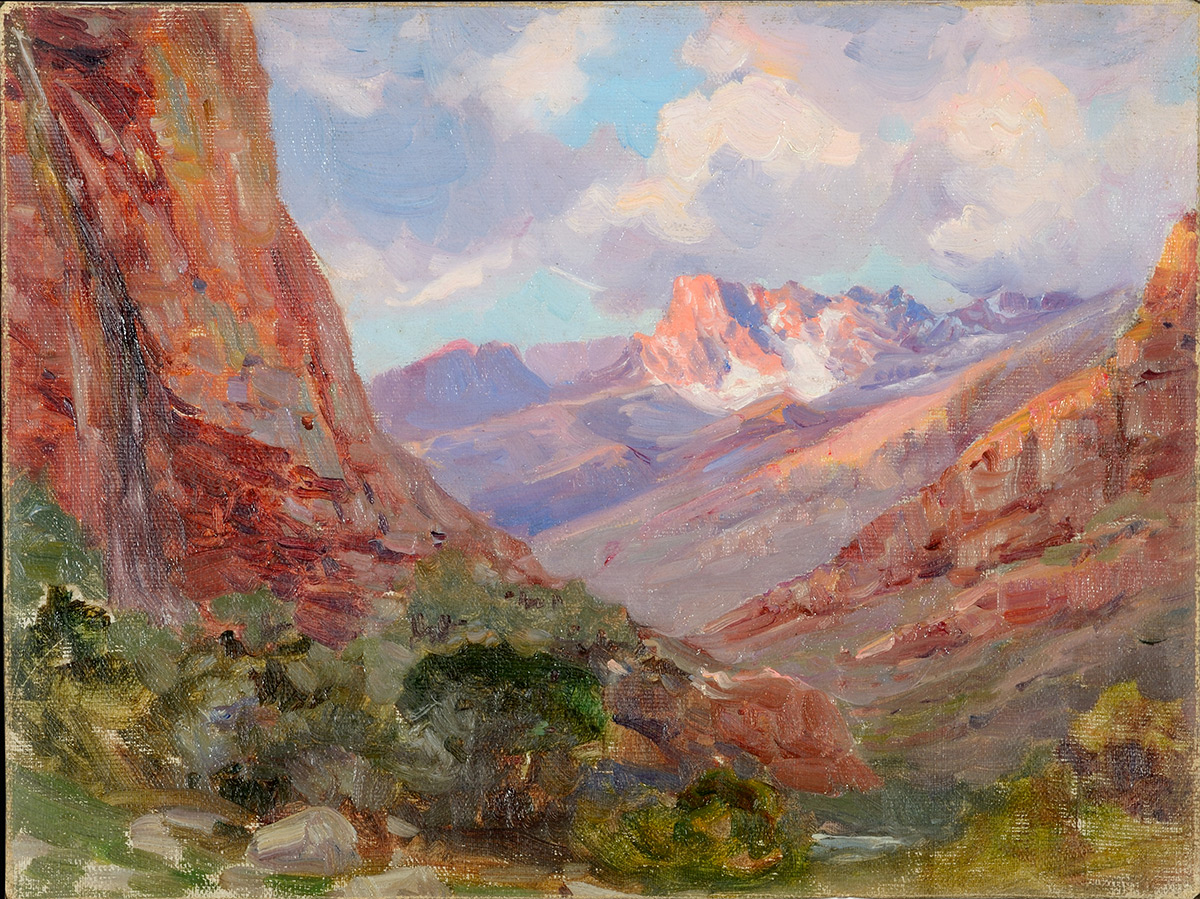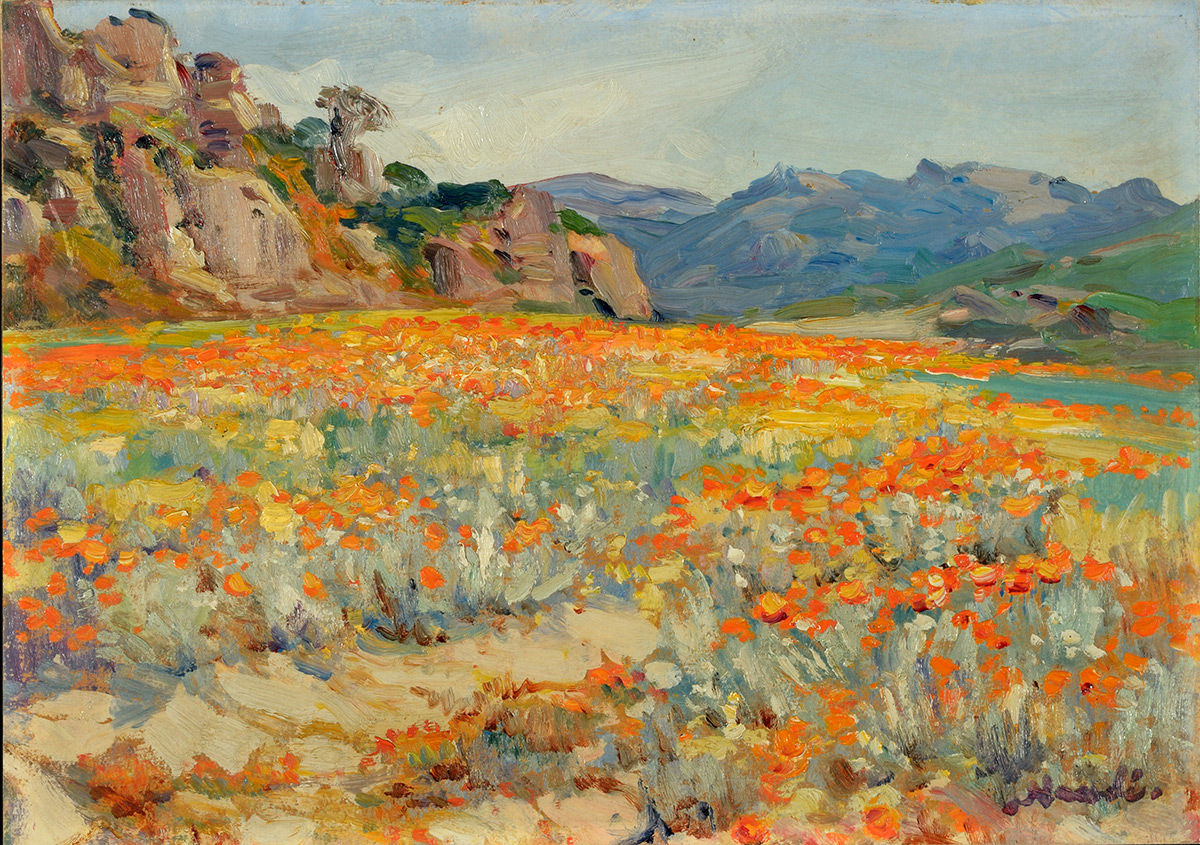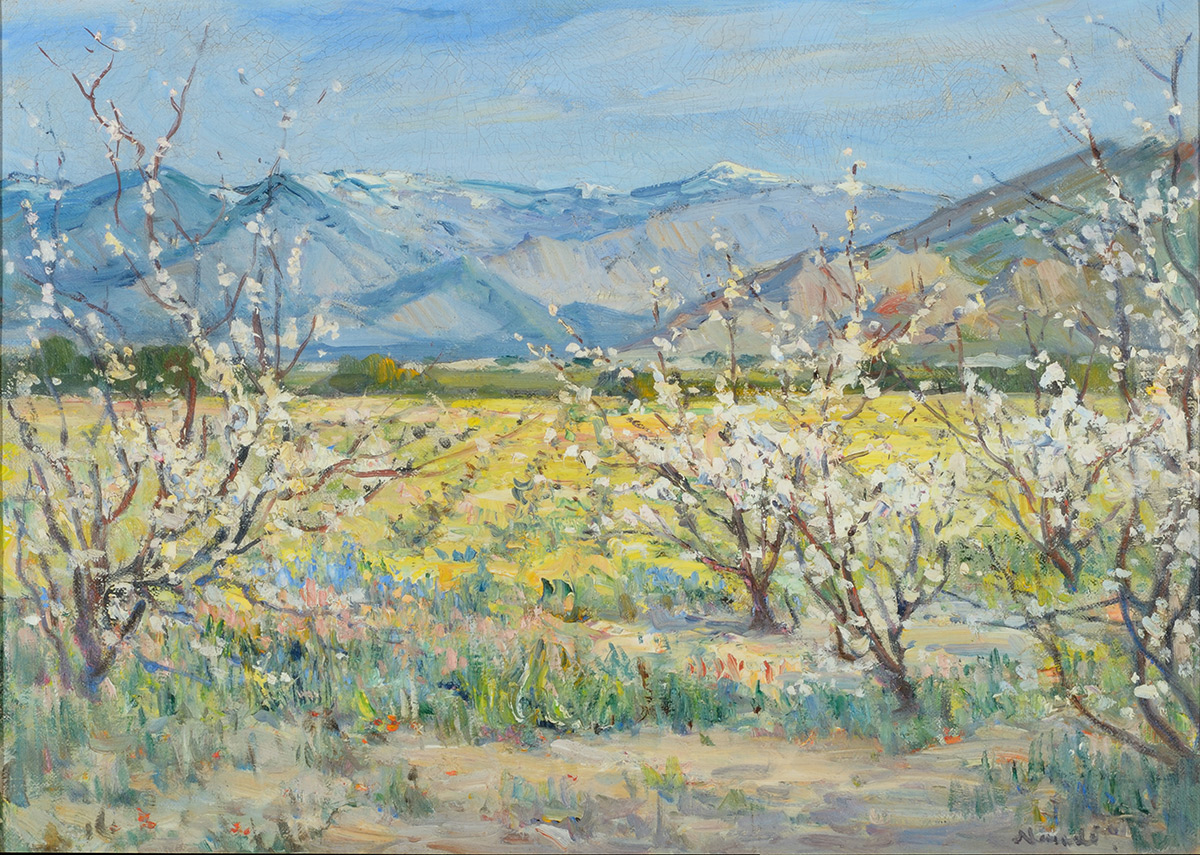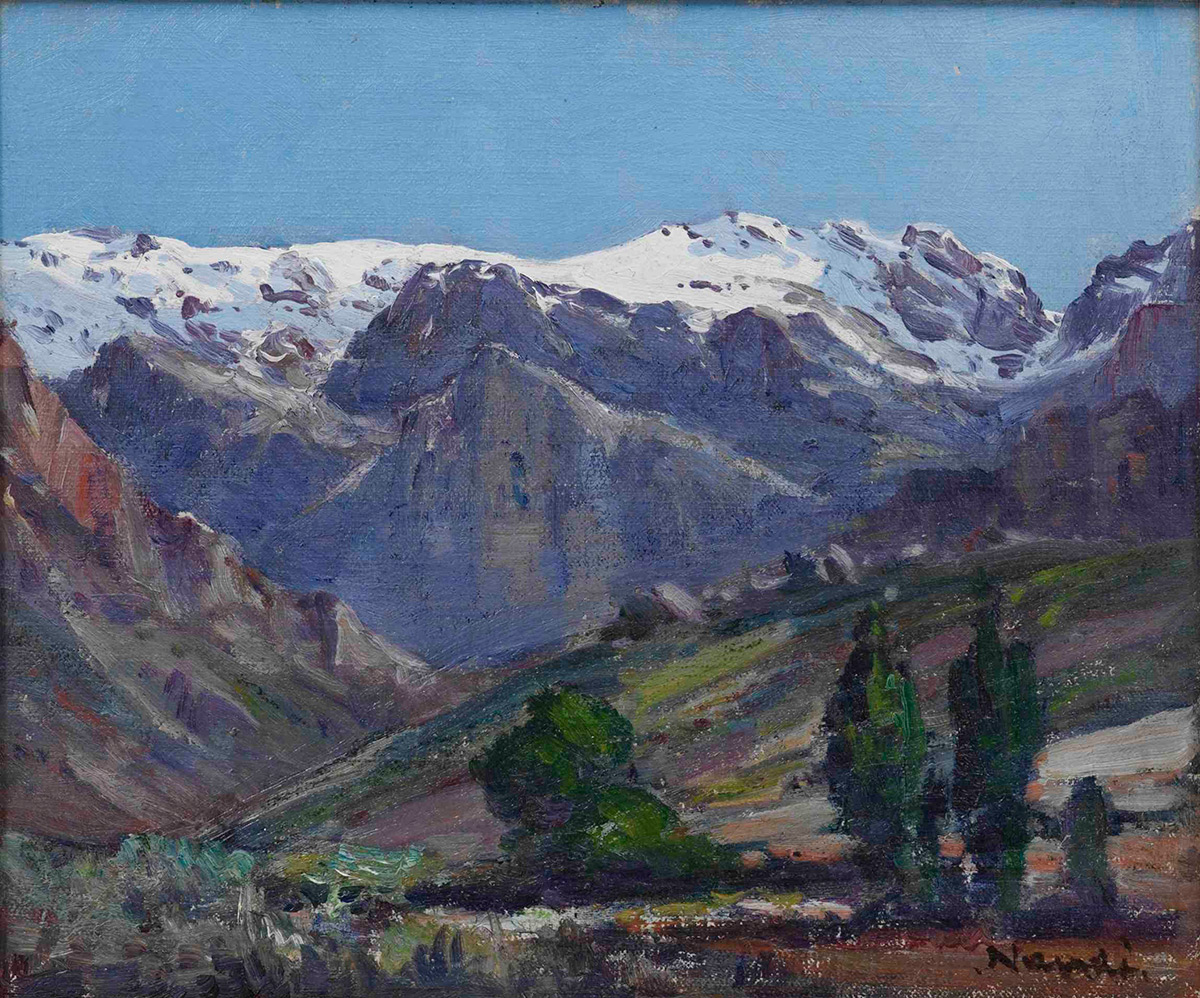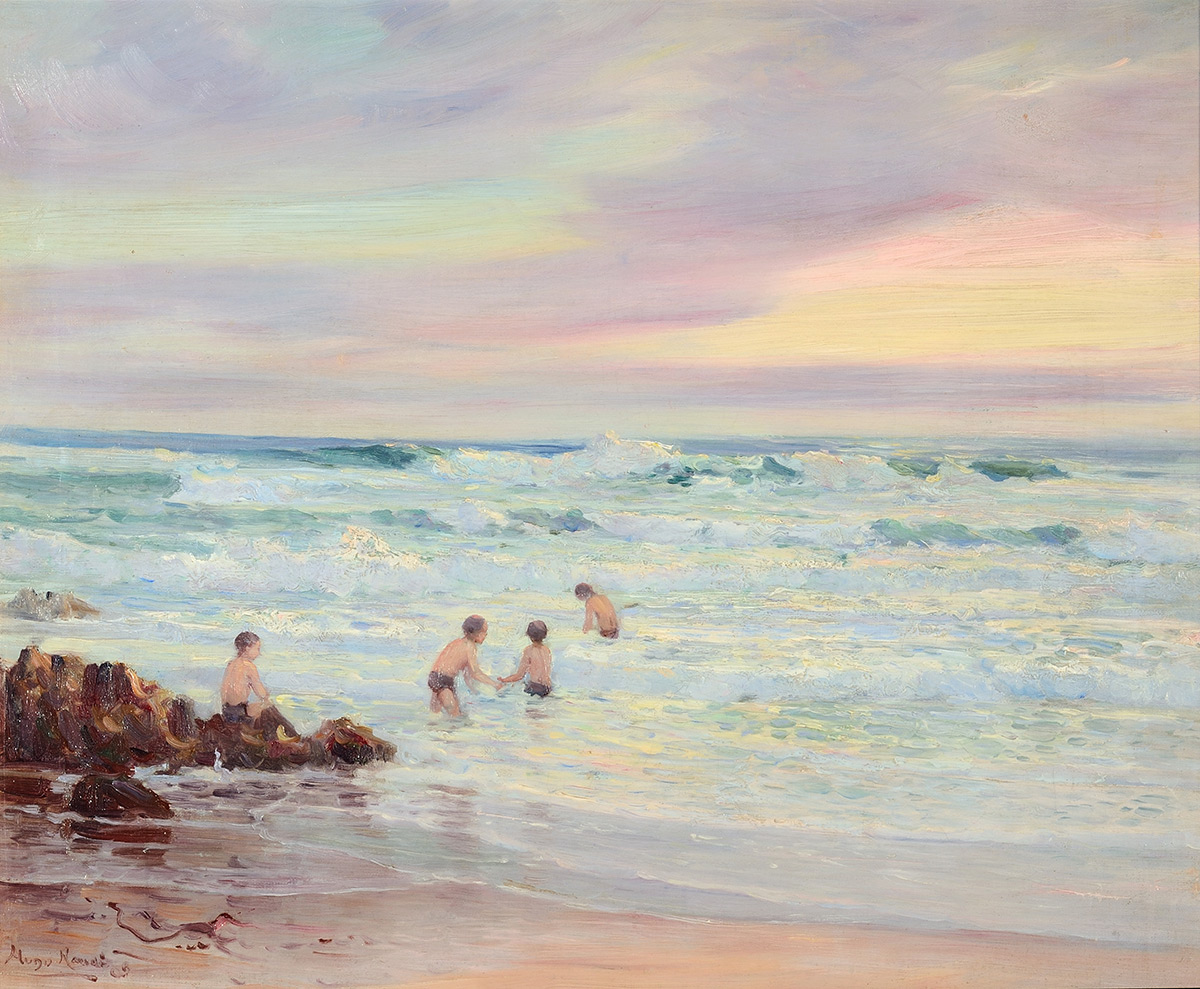Pieter Hugo NAUDE (1896 – 1941)
BIOGRAPHY
Pieter Hugo Naudé, better known as Hugo Naudé, is one of South Africa’s pioneer artists. He was born and raised on his family’s farm, Aan de Doorns, in Worcester, in the Western Cape, the dramatic landscapes of which inspired much of his output throughout his life.
In 1889, he travelled to London where he trained at the prestigious Slade School of Fine Art, and the following year he continued his studies at the Academy of Fine Arts Munich (AKDB, München). While in Europe, Naudé spent a year in Fontainebleau where he lived and worked amongst the Barbizon School of French painters, which inspired him to create his own Cape Impressionist style – which was later adopted by generations of artists who followed him, including Gregoire Boonzaaier, JH Pierneef and Ruth Prowse.
Naudé travelled by caravan on many painting expeditions across southern Africa, painting en plein air with bold hues and a unique freshness of style.
In 1939, two years before his death, he was awarded the Medal of Honour for painting by the Suid-Afrikaanse Akademie vir Wetenskap en Kuns (South African Academy for Science and Art). He has been recognised with two retrospective exhibitions, the first in 1969 at the Pretoria Art Museum, and the second at the [Iziko] South African National Gallery in Cape Town in 1974.


